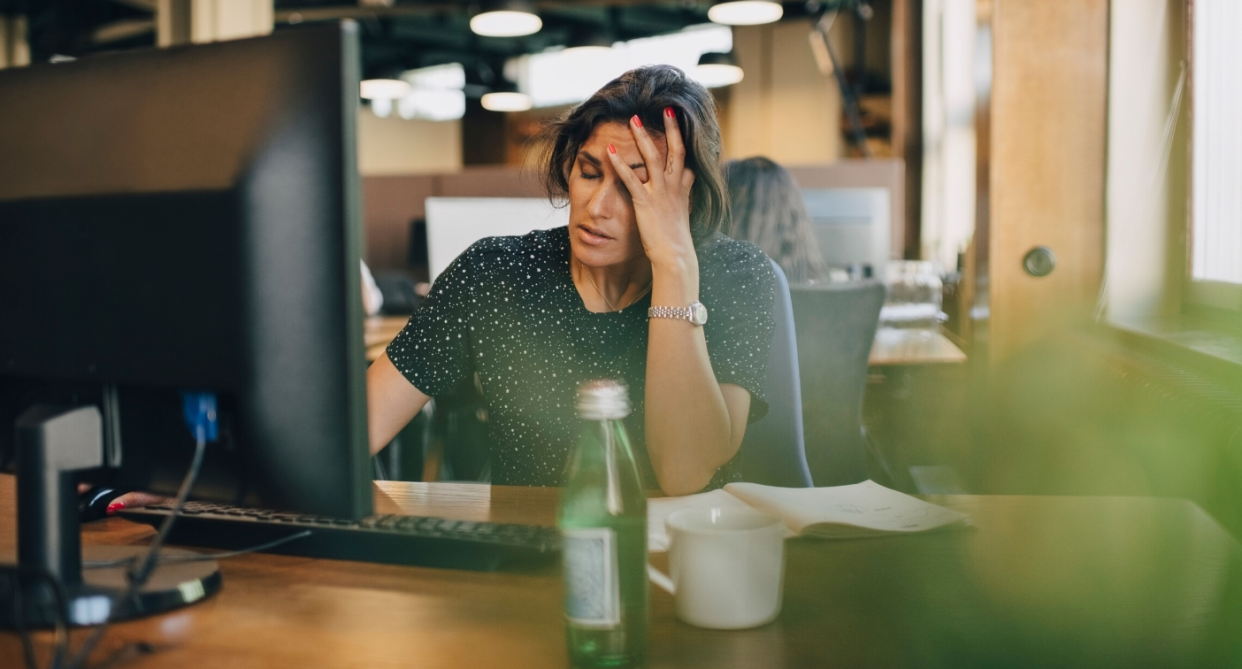Blue Monday: How to effectively overcome stress and anxiety at home

It’s the third Monday of January, which means it’s Blue Monday. The concept of it being the saddest day of the year was coined in 2004 by psychologist Cliff Arnall who created a formula for the January blues after he was asked to do so by travel firm Sky Travel, who then used the phrase “Blue Monday” promote their winter deals.
While the legitimacy of the Blue Monday blues is still in question, the day is typically tied to the natural grey and gloominess of winter and the guilt and disappointment powered by the many already-failed New Year’s resolutions.
According to Carl Lemieux, MBA, Psychologist and Mindspace leader, people can take better control of their seasonal slumps, and overall negative emotions, with mindfulness training.
“Mindfulness is all about training the mind and creating an environment that is anchored in the present moment,” explains Lemieux. “The reason why mindfulness is taking up so much importance these days is that the brain is wired to be constantly thinking — constantly thinking about the past, the future and what could go wrong, generating stress and anxiety. Today’s ‘blue zone’ stimulations include [not getting] enough likes on Facebook and worries about being stuck in traffic before a meeting.”
As a Mindspace mindfulness coach, Lemieux regularly works with Balnea Spa to provide training and support to help improve a self-care and a mental-wellbeing to both guests and staff.
“Being mindful also means choosing to be present without judging either yourself or what’s happening. You’re just opened to the environment that’s being presented to you which is opened by the elements of kindness and openness. The space at Balnea easily allows you to appreciate your setting,” he adds. “We offer guided meditations and wellness walks.”
ALSO SEE: I visited this luxury thermal spa —and here's what I thought
Here, Lemieux walks us through five effective ways to practice mindfulness at home.
“Just being present and doing nothing is not wasting time.”
Acknowledging and being in the present without doing anything actually allows the brain to repair itself. According to Lemieux, 80 per cent of our worries about the future dosen’t actually happen. Rather than allowing your mind to wander, try to clear your mind and observe your surroundings next time you’re having a coffee in the morning, taking a shower or walking the dog.
“We anticipate things that never happen. Just bring it back and focus what you’re doing. Be in the present moment and appreciate what you’re doing.”
“Take a moment to breathe.”
Take moments of the day to just breathe. Lemieux suggests taking 10-seconds to deeply breathe in and out to bring attention away from your thoughts and to regulate and slow down your body, allowing it to reconnect to itself.
“Take note of your thoughts.”
Lemieux confirms that self-awareness is one skill that requires a lot of practice, but once you are able to observe and accept your present emotions, you’ll be able to proceed with those emotions with the best intent. Whether you’re nervous; anxious; ill-prepared, ask yourself if its best decision for you to walk away or take a break.
“Stop multitasking.”
While most days require you to multitask, Lemieux describes multitasking as one of the “dangerous things you could to yourself.” “It’s efficient and it creates incredible stress and depletes energy. Finish your task and move onto another one. Don’t move back and forth — that can sometimes take up an extra 20 minutes a day. It’s very stressful,” says Lemieux.
“Practice meditation.”
Practising consistent meditation is said to deliver and change how your day works. Lemieux says beginners should start with five minutes in the morning, focusing on breathing. To help you get into the zone, try using apps like Calm and Headspace.
Let us know what you think by commenting below and tweeting @YahooStyleCA! Follow us on Twitter and Instagram.


